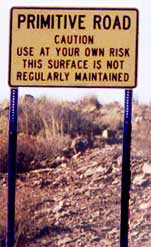 |
 |
WHEN
EVERYTHING WAS PERMITTED, PT. 1
A LINEAR HISTORY OF MAXIMUM HORSEPOWER IN A FORGOTTEN
AGE OF NO LIMITS
|
By Cole Coonce
10/7/05
 e
as a society live in an age of limits... Life as we know it
is a bottleneck. Raw, unmitigated speed has always been the
release from the trappings of the mundane. Speed has always
been a metaphor for freedom. But even that notion is tainted
by the endless parade of legislation that stifles innovation...
Nowadays, every automotive enterprise is an exercise is limited
performance: Top Fuel dragsters have boundaries on gear ratios,
revolutions per minute, air intake, choices of fuels, etc.
NASCAR has restrictor plates, Champ Car (nee CART) has a limit
on turbocharger boost and its emulator, IndyCar, has kissed
off turbos altogether. e
as a society live in an age of limits... Life as we know it
is a bottleneck. Raw, unmitigated speed has always been the
release from the trappings of the mundane. Speed has always
been a metaphor for freedom. But even that notion is tainted
by the endless parade of legislation that stifles innovation...
Nowadays, every automotive enterprise is an exercise is limited
performance: Top Fuel dragsters have boundaries on gear ratios,
revolutions per minute, air intake, choices of fuels, etc.
NASCAR has restrictor plates, Champ Car (nee CART) has a limit
on turbocharger boost and its emulator, IndyCar, has kissed
off turbos altogether.
I'm sure there are a litany of logical arguments (z-z-z-z-z)
for all of these restrictions, most saliently how these rules
and regulations "save" their respective forms of
motorsport, but what I'm saying is that there is nothing to
"save" at this point; the form--be it Top Fuel,
NASCAR, Formula 1 --is cooked, toasted and fossilized. The
very notion of "limits" is antithetical hot rodding's
mantra of "run whatcha brung and hope you brung enough."
When the technology exceeds the capacity of its applied field
of endeavor and therefore the technology must be neutered,
the form is about as inspired as affirmative action, fat free
tacos, stuffed-up plumbing, and movies edited for network
television.
The last bastion of unlimited performance--and like I say,
to most folks the notion of "unlimited performance"
is what made hot rodding interesting in the first place--is
the pursuit of the Land Speed Record. It is the last scene
where there are damn near no rules, where freedom of expression
is limited only to one's imagination, where barriers exist
only in the mind. It is where there still dwells the strange,
powerful energy which envelopes the id and psyche of its subjects
with the same grip as the physiological phenomenon known to
fighter pilots and astronauts as "Go! Fever." It
is where everything is permitted...
Most fans of the form know that Royal Air Force wunderkind
Andy Green hot-shoed Richard Noble's Thrust SSC to Mach 1
on October 13, 1997 in Black Rock, Nevada; his feat was the
coda of a shootout between the SSC and Craig Breedlove's Spirit
of America. Shamed, Breedlove vowed to return to Black Rock
and "raise the bar" to 800 mph. "Going 8 in
'98" was Breedlove's jingoistic battle cry, worthy of
"54-40 or Fight!", had he actually achieved his
goal. But, citing a lack of Other People's Money as well as
a lack of understanding by the Bureau of Land Management (which
governs activities on the Black Rock playa), the Spirit of
America team has thrown in the towel. Their dream of turning
800 mph and taking back the LSR to the American Hot Rodder
is over.
But rather than dwell on disheartening failures, DragRacingOnline
has taken the closing of this chapter to salute the audacious,
intrepid heroes who attacked the LSR throughout the 20th Century--that
is to say, inasmuch as space allows. (Unfortunately, the publishing
world also has limits...)
*****
The whole shebang began in 1898 with--of all
folks--the French in--of all things--a chain-driven electric
car. Count Gaston de Chasseloup-Laubat is credited as the
first official plaque-holder of the World Land Speed Record.
He puttered through the measured kilometer in 57 seconds for
a recorded speed of 63 clicks per hour, which translates to
39 mph. In '02, France's Leon Serpollet leapfrogged over Count
Gaston in a steam-engined "La Balleine" (The Whale)
at 75.07 mph. Later, the US made its presence felt via Henry
Ford. In a successful attempt to crank up the profile of the
fledgling FoMoCo, Ford slid his black Arrow across a frozen
lake outside of Detroit at 91 mph in 1904. He was later trumped
by Louis Emile Rigolly, a Frenchmen who clocked a one-kilometer
speed of 103.55 mph to break the 100-mph barrier.
It was around this moment when the discrepancy
in what "officially" constituted a speed record
began to take shape. In order to establish some semblance
of credibility as per the timing systems and as to whether
these attempts were aided with a tailwind, the Federation
International de l'Automobile (FIA) intervened and attempted
to establish order and protocol. To Yanks such as Barney Oldfield
and Ralph de Palma, this French bureaucracy was about as popular
as UN helicopters in Montana and they maintained that one
banzai, balls out record run had as much validity as back-to-back
runs sanctioned by some foo-foo timekeepers from across the
pond.
By the end of the '20s the "back-to-back
turnaround, two-way average within an hour" system was
established as the criteria for holding the record ratcheting
up the LSR wars throughout the remainder of the 20th Century
with folks like Brits such as Henry Segrave, Sir Malcolm Campbell,
George Eyston, Richard Noble and Andy Green as well as Yanks
like Craig Breedlove, Art Arfons and Gary Gabelich; on flat
tableaus such as the beaches of Wales, Denmark, and Daytona
and fossilized badlands such as Verneuk Pan, South Africa;
Bonneville, Utah; Lake Gairdner, Australia and Black Rock,
Nevada.

|
